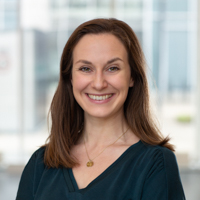Danish for groups
Here you can read more about how academic language consultant Karen-Margrete Frederiksen goes about planning, designing and teaching Danish courses for international knowledge workers. The case below is about a course for a small group of associate professors from the Department of Mathematical Sciences at the University of Copenhagen.
"CIP received an enquiry from the Department of Mathematical Sciences about a Danish course for four associate professors who wanted to improve their everyday spoken Danish, both in and outside the workplace. As soon as we received the course participants’ email addresses, we sent them a questionnaire that we have developed to identify specific Danish language needs and wants. The needs analysis consisted of questions about participants’ background, their Danish language competences and their needs and wants for the Danish course. The course was then put together based on participants’ responses.
At CIP, we send out needs analysis questionnaires to all participants who have signed up for a course or workshop with us. This questionnaire includes sections where participants can self-assess their language level according to the CEFR ‘Can do statements’, and where they can state their own individual preferences and goals for the course. We thus work consciously and systematically to identify Danish language competences and specific needs, so that the level of the course is defined as precisely as possible and the course content made as relevant as possible. In this work, we draw on the latest needs analysis research, for example, a current Danish PhD project carrying out an in-depth investigation into needs analyses in relation to language learning.
The course mentioned above focused on everyday spoken Danish; as such, the course was based on oral presentations, which the participants chose themselves based on their personal interests and the relevance of the topic for the whole class. All the presentations were prepared beforehand, recorded using a mobile phone, and the language used analysed by me, so I could send feedback to the presenter, who then revised their presentation and finally gave it a second time, in a version that sounded more Danish. Afterwards, I went over any points that arose from analysing the oral presentations, for example, pronunciation rules, grammar topics and vocabulary items.
The final course evaluations were overwhelmingly positive, primarily because the course was so 'focused on student hub words, terms and expressions' as one participant put it. Mission accomplished!"
Meet a teacher
 Katja Årosin Laursen is an academic language consultant at CIP. Among other tasks, she teaches Danish language courses for groups. Read more about Katja and her academic profile here.
Katja Årosin Laursen is an academic language consultant at CIP. Among other tasks, she teaches Danish language courses for groups. Read more about Katja and her academic profile here.
